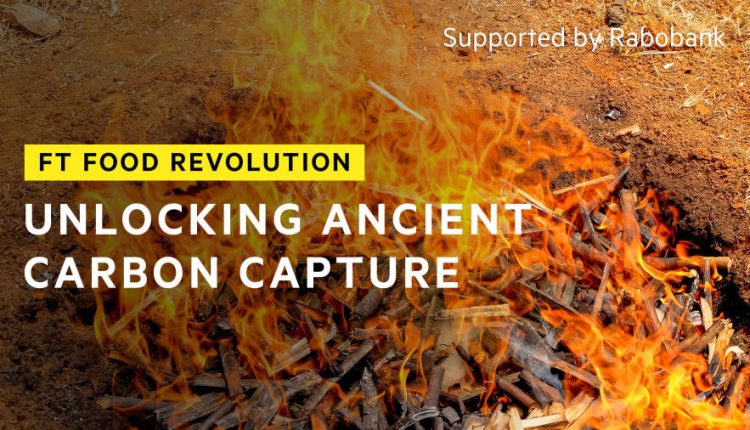You can enable subtitles (captions) in the video player
Could the product of an ancient waste-processing technique help decarbonise modern agriculture and slow global warming? Biological charcoal or biochar is produced when organic matter like crop husks, woodchips, or animal droppings is heated with little or no oxygen present. The process called pyrolysis produces a lightweight porous material that locks in much of the carbon that conventional burning or composting would release into the atmosphere. When added to the soil, it also helps with water retention and in channelling nutrients to plants. South American civilizations are thought to have pioneered the practise thousands of years ago by burying smouldering biomass which transformed poor soils into the famed fertile terra preta or Black Earth of the Amazon basin.
Modern commercial biochar is baked in kilns and often sold as a soil improver, but local governments and research groups are now investigating the feasibility of large-scale production and use as a way of storing carbon and cutting emissions. According to a University of Aberdeen study, China’s entire staple crop production of corn and wheat could become a net carbon sink soaking up the equivalent of 38mn tonnes of CO2 every year if biochar was applied to soils instead of untreated organic matter and fertilisers and if the biogas and oil byproducts of biochar production were used to generate electricity in place of fossil fuels. But the study also concedes that building the thousands of pyrolysis plants and the infrastructure required would be expensive and that the actual amounts of carbon storage and crop yields might differ depending on soil type.
Other academics and researchers also warn that more work is needed to prove the viability and effectiveness of biochar, which seems to vary according to the feedstock as well as the climate and terrain where it is used. The energy used to make it also needs to be factored in. The UK’s Nottingham University says it’s leading the world’s largest biochar field trial on test plots across working farms, grasslands, forests, and abandoned industrial sites in the English Midlands and Wales.
Claims that biochar can trap and store up to two-thirds of its carbon content will be tested by chemical analysis, which can measure how much is locked away in the soil and how much ends up back in the atmosphere as CO2. Biochar production has come a long way from its ancient rudimentary origins , but making and distributing enough of the modern equivalent in a way that can cut global carbon emissions will not be simple.
Read the full article here

